How to Grow Blackberries: Easy Steps to Grow and Nurture Your Own
- March 15, 2024
- 0 comment
Discover the secrets of cultivating succulent blackberries in your garden with our expert guide on How to Grow Blackberries. From selecting the perfect variety to the joy of harvesting, learn the essentials of nurturing these nutritious, flavor-packed berries for both beginners and seasoned gardeners.
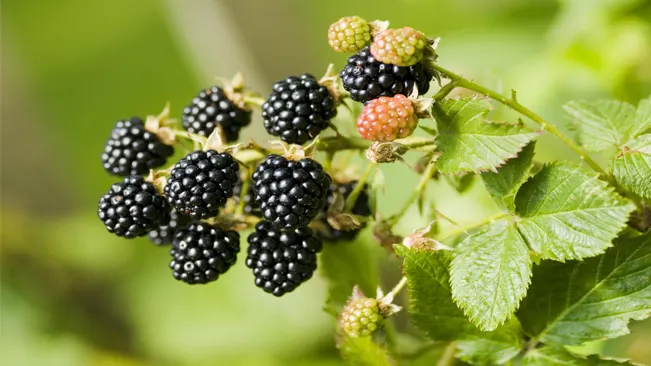
Nutritional Benefits of Blackberries
| Benefit | Description |
|---|---|
| High in Nutrients | Blackberries are rich in vitamins C and K, fiber, and manganese, offering a variety of essential nutrients. |
| Antioxidant Rich | They are high in antioxidants like anthocyanins, which help combat oxidative stress and may reduce disease risk. |
| Supports Oral Health | Certain compounds in blackberries have antibacterial and anti-inflammatory properties that may benefit oral health. |
| Brain Health | The antioxidants in blackberries may improve brain health and help prevent age-related memory loss. |
| Skin Health | Vitamins C and E in blackberries help promote skin health and can protect skin against UV damage and aging. |
| Heart Health | The fiber, potassium, and other heart-healthy nutrients in blackberries can support cardiovascular health. |
| Immune Boosting | High vitamin C content strengthens the immune system and helps the body fight off infections. |
| Digestive Health | The high fiber content aids in digestion, helps prevent constipation, and contributes to a healthy digestive tract. |
| Weight Management | Being low in calories and high in fiber, blackberries can promote satiety and aid in weight management. |
| Anti-inflammatory | Their anti-inflammatory properties can reduce the risk of chronic inflammation, a precursor to many diseases. |
| Blood Sugar Regulation | Blackberries have a low glycemic index and high fiber content, which can help regulate blood sugar levels. |
Key Steps in How to Grow Blackberries: Choosing the Right Variety
There are numerous varieties of blackberries, but they generally fall into two main categories: erect and trailing. Erect blackberries are more upright and don’t require as much support, whereas trailing blackberries produce longer canes that need to be treed or supported. Some popular varieties include ‘Apache’, ‘Arapaho’, and ‘Triple Crown’. Select a variety that suits your climate and space availability.
Understanding Erect Blackberries: Characteristics and Care
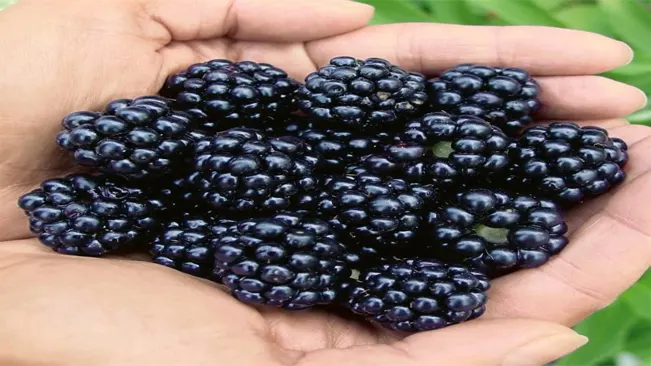
- Characteristics: These blackberries have stiff, upright canes and are more self-supporting than trailing varieties. They tend to be hardier and more vigorous.
- Maintenance: Generally require less maintenance in terms of support structures. They may need some minimal trellising or staking in certain conditions.
- Popular Varieties:
- Apache: Known for its large, firm berries with excellent flavor. It’s a thornless variety, which makes handling and picking much easier.
- Arapaho: Another thornless variety, prized for its early ripening and good flavor. It has a compact growth habit and excellent disease resistance.
- Navaho: The first erect blackberry variety to produce late in the season. It’s also thornless and known for its sweet berries.
Exploring Trailing Blackberries: Growth Habits and Support Needs
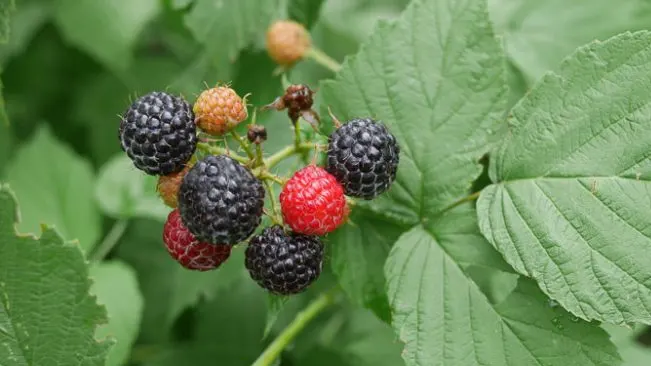
- Characteristics: These plants have long, flexible canes that grow horizontally and need support. They’re often preferred for their fruit quality.
- Maintenance: Require a trellis or similar support system for the canes. This support helps in managing the plants and in harvesting the fruits.
- Popular Varieties:
- Triple Crown: A semi-erect to trailing, thornless variety, known for its large, sweet, and flavorful berries. It’s named for its extended harvest period.
- Boysenberry: A hybrid variety, known for its large, juicy, and slightly tart berries. It’s a classic choice for jams and pies.
- Loganberry: A cross between a blackberry and a raspberry, Loganberries are known for their unique flavor. They require similar support as trailing blackberries.
Preparing Your Garden for Blackberry Cultivation
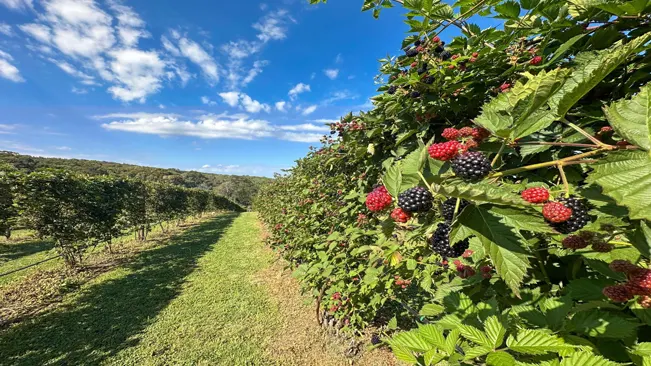
- Climate Suitability: Check the hardiness of the variety against your local climate. Some varieties are more tolerant of heat, cold, or humidity.
- Space Considerations: Erect varieties generally require less space and are better suited for smaller gardens or limited spaces.
- Berry Usage: Consider what you want to do with your berries. Some varieties are better for fresh eating, while others are ideal for cooking or making jams.
- Disease Resistance: Look for varieties that are resistant to common diseases in your area, such as rust or powdery mildew.
- Thorn Presence: Decide if you want thornless varieties for ease of picking and maintenance.
Essential Site Preparation Steps for Healthy Blackberry Plants
Planting Blackberries: Techniques for a Thriving Garden
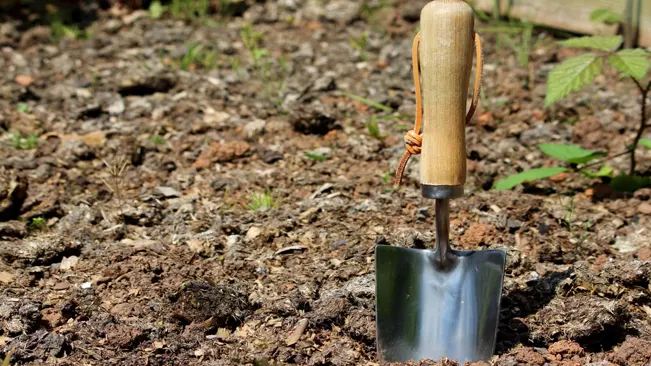
- Soil Testing and Adjustment: Before planting, it’s a good idea to test your soil’s pH. Blackberries prefer a pH range of 6.0 to 7.0. If the pH is too low (acidic), you can raise it by adding lime. If it’s too high (alkaline), you can lower it using sulfur or organic matter.
- Improving Soil Quality: Blackberries thrive in well-drained, fertile soil. If your soil is heavy clay or too sandy, you can improve its quality by adding organic matter like compost, well-rotted manure, or leaf mold. This improves drainage and soil structure while also providing nutrients.
- Clearing the Site: Remove all weeds, grass, and debris from the planting area. Weeds can compete with blackberry plants for nutrients and water, so it’s crucial to start with a clean slate.
Optimizing Watering and Mulching for Blackberry Plants

- Choosing the Right Time: The best time to plant blackberries is early spring or late fall. In spring, plant after the last frost date in your area. In fall, plant at least four weeks before the first expected frost. This timing allows the plants to establish their root systems before extreme weather conditions.
- Planting Depth and Technique: Plant blackberries at the same depth they were grown in the nursery. If you’re using bare-root plants, soak the roots in water for 1-2 hours before planting. Spread the roots out in the planting hole and cover them with soil. Gently tamp down the soil and water the plants thoroughly.
- Spacing: Proper spacing is important for air circulation and ease of maintenance. Erect blackberry varieties should be spaced 3-4 feet apart within rows. For trailing varieties, which have longer canes and need more room to spread, space them 5-8 feet apart. If you’re planting multiple rows, allow 8-10 feet between rows.
- Watering After Planting: Water the plants deeply after planting to settle the soil around the roots and eliminate air pockets. Keep the soil consistently moist, but not waterlogged, as the plants establish.
- Mulching: After planting, apply a layer of organic mulch around the base of the plants. This helps retain moisture, regulate soil temperature, and suppress weed growth. Suitable mulches include straw, wood chips, or pine needles.
Optimizing Watering and Mulching for Blackberry Plants
Watering Blackberries: Best Practices for Hydration

- Consistency: Regular watering is crucial for blackberry plants, particularly during their growing phase and as the fruits develop. Inconsistent watering can lead to problems like poor fruit development and increased susceptibility to pests and diseases.
- Amount: The general recommendation is about 1-2 inches of water per week. This can vary depending on factors like climate, weather conditions, and soil type. For instance, sandy soils may require more frequent watering as they drain faster, whereas clay soils retain moisture longer.
- Method: Drip irrigation or soaker hoses are ideal as they deliver water directly to the root zone, minimizing water loss due to evaporation and preventing moisture on the leaves, which can promote fungal diseases. Watering in the morning is preferable to allow any water that gets on the foliage to dry during the day.
- Monitoring Soil Moisture: It’s important to check the soil moisture regularly. The soil should be moist but not waterlogged. Over-watering can be as harmful as under-watering, leading to root rot and other issues.
The Benefits of Mulching Your Blackberry Bushes

- Purpose: Mulch serves several purposes in blackberry cultivation. It helps retain soil moisture, reducing the need for frequent watering. It also suppresses weeds, which compete with blackberry plants for nutrients and water.
- Types of Mulch: Organic mulches are preferable for blackberry plants. Options include straw, wood chips, pine needles, or even compost. These materials not only suppress weeds and retain moisture but also gradually break down, adding organic matter and nutrients to the soil.
- Application: Apply a 2-3 inch layer of mulch around the base of the plants, but be careful not to pile it directly against the stems to avoid rot. The mulch layer should extend out to the drip line of the plants (the area directly beneath the outer circumference of the branches) or even beyond.
- Seasonal Considerations: In colder climates, mulch can provide insulation for the roots over winter. In hot climates, it helps keep the soil cool. Refreshing or replacing the mulch as needed (usually annually or biannually) maintains its effectiveness.
- Additional Benefits: Over time, as organic mulch decomposes, it improves soil structure and fertility, promoting healthier plant growth.
Mastering Pruning and Training Techniques for Blackberries
Pruning is essential for healthy plants and abundant fruit production. For erect blackberries, prune canes that have fruited immediately after harvesting. For trailing varieties, trellis the canes for support. In the winter, prune to remove dead or diseased canes and to thin the plants, allowing air circulation.

The Lifecycle of Blackberries: Growth Cycles and Care
- Blackberry plants have a biennial growth cycle. In the first year, they produce vegetative canes called primocanes. In their second year, these canes become floricanes, bearing flowers and fruit before dying off.
- Understanding this cycle is crucial for effective pruning and training.
Pruning Erect Blackberries for Optimal Growth and Fruit Production
- After the harvest season, immediately prune the floricanes of erect blackberries, as they will not produce fruit again.
- This pruning involves cutting back the canes that have fruited to ground level.
- Also, during the dormant season, typically in late winter, it’s essential to thin out the plants. Remove any weak, damaged, or excessively crowded canes. Leave about four to six of the healthiest canes per foot of row.
Training Trailing Blackberries: Methods for Support and Management
- Trailing varieties require support structures like trellises.
- As the primocanes grow, train them by gently weaving or tying them onto the trellis. This supports the plant and encourages horizontal growth, which promotes better fruit production.
- In winter, similar to erect types, prune out the canes that have fruited and are dying off. Also, prune to thin out the canes, leaving the most vigorous and healthy ones.
Strategic Pruning for Enhancing Plant Health and Berry Yield
- Regular pruning promotes better air circulation within the plant, reducing the risk of fungal diseases.
- It also allows more sunlight to penetrate the plant, which is crucial for fruit ripening and new cane growth.
- Proper pruning and training can significantly increase the yield and quality of the fruit.
Routine Maintenance Pruning: Keeping Your Blackberries in Top Shape
- Throughout the growing season, keep an eye out for any dead, diseased, or broken canes. Remove these promptly to maintain plant health.
- Tip pruning (trimming the end of young canes) in summer can encourage branching, leading to more fruit-producing laterals.
The Importance of Winter Pruning for Blackberry Vitality
- Winter is the ideal time for major pruning efforts when the plant is dormant.
- Remove any canes that are over two years old, as well as any thin, weak canes.
- This is also a good time to shape the plant and control its size.
Managing Pests and Diseases in Blackberry Cultivation
Integrated Pest Management for Blackberries
- Spider Mites
- Identification: Tiny, spider-like pests, often found on the underside of leaves.
- Damage: They suck sap from the leaves, causing yellowing, bronzing, and eventual leaf drop.
- Control: Increase humidity around plants, use strong water sprays to dislodge them, or apply miticides if infestation is severe.
- Japanese Beetles
- Identification: Metallic blue-green beetles, about 1/2-inch long.
- Damage: They chew on leaves, flowers, and ripening berries, often leaving a skeletonized pattern.
- Control: Hand-picking, trapping, and using environmentally friendly pesticides can be effective. Beneficial nematodes can reduce larvae in the soil.
Combating Common Diseases in Blackberry Plants
- Rust
- Identification: Orange to yellow pustules on the undersides of leaves.
- Damage: Can cause defoliation, weakening the plant over time.
- Control: Remove and destroy infected plant parts. Use fungicides and choose resistant varieties.
- Leaf Spot
- Identification: Small spots on leaves that may merge and turn brown.
- Damage: Severe infections can lead to leaf drop, affecting plant vigor.
- Control: Improve air circulation, avoid overhead watering, and apply fungicides as necessary.
- Powdery Mildew
- Identification: White, powdery fungal growth on the surface of leaves.
- Damage: Causes leaf distortion, reduced fruit quality, and can stunt growth.
- Control: Ensure adequate plant spacing, and use fungicides if needed. Resistant varieties are also beneficial.
Best Practices for Healthy Blackberry Bushes
- Sanitation: Regularly clean up fallen leaves and debris around the plants. This reduces the habitat for pests and disease.
- Adequate Spacing: Proper spacing between plants ensures good air circulation, which helps to reduce humidity and the risk of fungal diseases.
- Resistant Varieties: Opt for varieties known to be resistant to common pests and diseases in your area.
- Organic Practices: Use organic pesticides and fungicides to minimize environmental impact. Neem oil, insecticidal soaps, and sulfur-based fungicides are common organic options.
- Monitoring: Regularly inspect plants for early signs of infestation or disease. Early detection makes management easier and more effective.
Harvesting and Savoring Blackberries
The Right Time to Harvest Blackberries for Peak Flavor
Timing
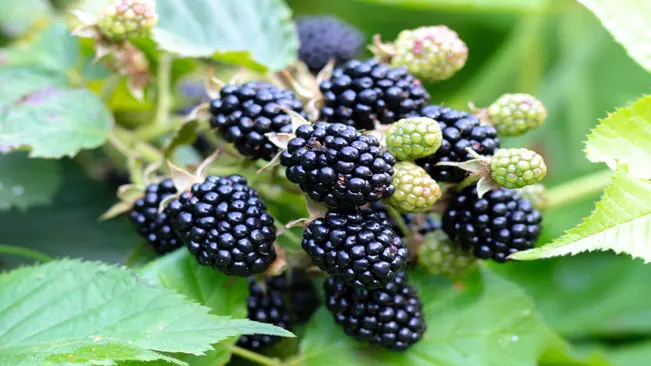
- The harvesting season for blackberries usually falls in mid-summer to early autumn, but the exact timing can vary depending on your geographical location and the blackberry variety. Keep an eye on the berries as they develop.
Ripeness Indicators
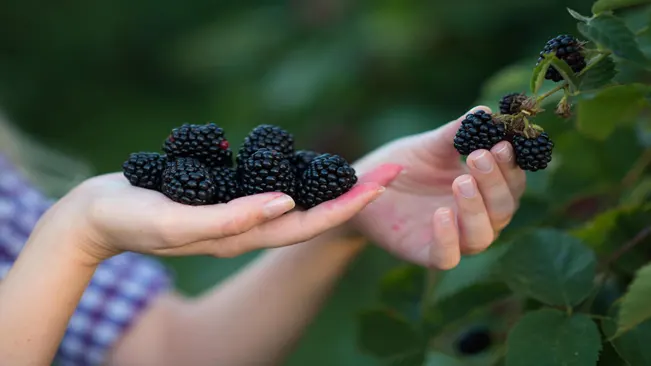
- You’ll know blackberries are ripe and ready for harvest when they turn completely black and have a slight give to the touch. Another good indicator of ripeness is if the berries come off the stem easily with a gentle pull. Unripe berries will resist and remain firmly attached.
Harvesting Technique

- When picking blackberries, use gentle fingers to avoid bruising the delicate fruit. Hold the stem with one hand and gently pull the berry with the other. It’s advisable to harvest every couple of days as blackberries don’t all ripen at once.
Post-Harvest Handling
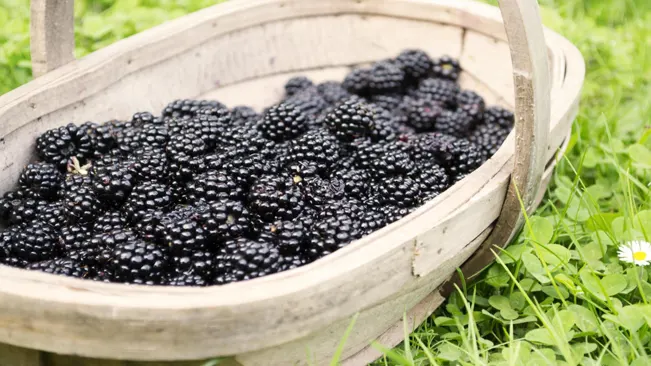
- Handle the berries carefully as they can be quite fragile. Place them in shallow containers to avoid crushing, and refrigerate them as soon as possible if not using immediately. Blackberries are best used within a few days of harvesting.
Creative Ways to Enjoy Your Blackberry Harvest
Fresh Consumption
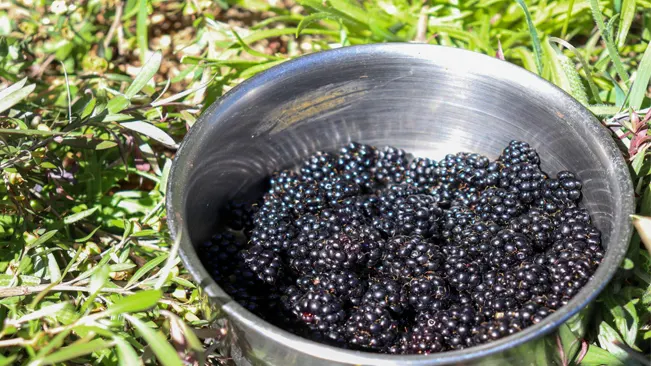
- One of the best ways to enjoy blackberries is fresh, straight off the bush. They have a sweet and slightly tart flavor that is exceptionally refreshing. Fresh blackberries can be added to salads, yogurt, or cereal for a nutritious boost.
Baking and Cooking

- Blackberries can be used in various recipes like pies, tarts, muffins, and cakes. They add a wonderful flavor and moisture to baked goods. Cooking blackberries into sauces or reductions can also add a delightful twist to savory dishes.
Making Jams and Preserves
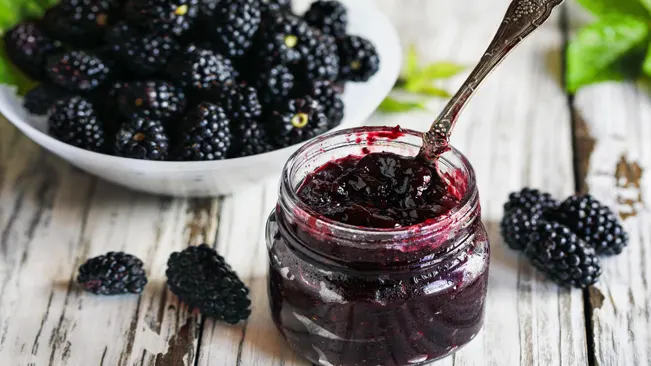
- Blackberries have a high pectin content, making them ideal for making jams, jellies, and preserves. Homemade blackberry jam can be a delightful treat for your breakfast or a lovely homemade gift.
Freezing for Later Use
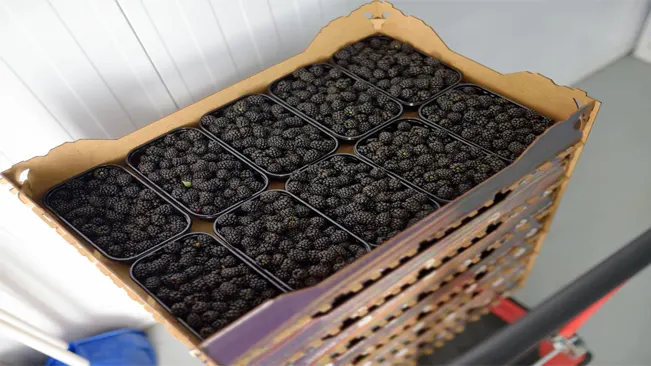
- If you have an abundance of blackberries, you can freeze them for later use. Spread them out on a baking sheet to freeze individually, then transfer them to a freezer bag. This method prevents the berries from clumping together.
Health Drinks

- Incorporating blackberries into smoothies or making blackberry juice are excellent ways to enjoy their health benefits. They add natural sweetness and a nutrient boost to your drinks.
Desserts and Sweets
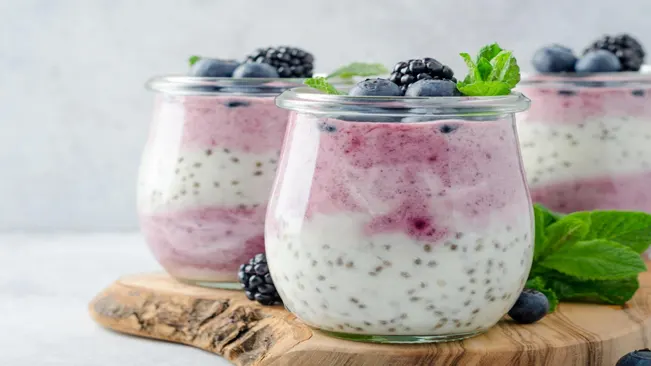
- Blackberries can be used in a variety of desserts like ice cream, sorbets, parfaits, and puddings. They pair well with other fruits, especially apples and peaches, for a mixed fruit dessert.
Related Post:
- How to Grow Malabar Spinach: Tips for a Thriving Vine
- How to Grow Eggplants: Beginner’s Guide to Thriving Plants
- How to Grow Pineapples: Your Step-by-Step Home Guide
Conclusion
Growing blackberries can be a rewarding experience for any gardener. With the right care and attention, these delicious berries can be a bountiful addition to your garden. Whether eaten fresh or incorporated into various culinary creations, blackberries offer both health benefits and delightful flavors.
FAQs (Frequently Asked Questions)
- What is the best time to plant blackberries? The ideal time to plant blackberries is either in early spring or late fall. This timing allows the plants to establish themselves during the mild weather.
- How much sun do blackberry plants need? Blackberry plants require full sun, meaning at least 6-8 hours of direct sunlight each day, to produce the best fruit.
- What kind of soil is best for blackberries? Blackberries thrive in well-drained, fertile soil with a pH between 6.0 and 7.0. Adding organic matter can improve soil quality.
- How far apart should blackberry plants be spaced? Erect blackberry varieties should be spaced about 3-4 feet apart, while trailing varieties need more space, about 5-8 feet apart.
- Do blackberry plants need a trellis? Trailing blackberries require a trellis or support system for their long canes. Erect varieties are more self-supporting but can benefit from a trellis for better yield and ease of harvest.
- How often should I water blackberry plants? Blackberries need about 1-2 inches of water per week, especially during the growing season and fruit development. Consistent watering is key.
- When should I prune blackberry bushes? Prune erect blackberry canes right after they bear fruit. In winter, prune all varieties to remove dead or diseased canes and to thin the plants for better air circulation.
- What are common pests and diseases for blackberries? Spider mites, Japanese beetles, rust, leaf spot, and powdery mildew are common issues. Choosing resistant varieties and maintaining good sanitation can help minimize problems.
- How do I know when blackberries are ready to harvest? Blackberries are ready to harvest when they turn fully black and come off the stem easily. They should be plump and firm, with a slightly glossy appearance.
- Can I grow blackberries in containers? Yes, blackberries can be grown in containers, especially dwarf or compact varieties. Ensure the container is large enough and has good drainage. Regular watering and feeding are essential in container gardening.

Kristine Moore
Forestry AuthorI'm Kristine Moore, a seasoned garden landscaping professional with over 30 years of experience. My extensive career has been dedicated to transforming outdoor spaces into stunning, sustainable landscapes. With a deep understanding of horticulture, design principles, and environmental stewardship, I have become a respected figure in the field, known for creating harmonious, visually appealing, and eco-friendly gardens. My commitment to excellence and continuous learning in landscaping trends and techniques has solidified my reputation as an expert in garden design and implementation.










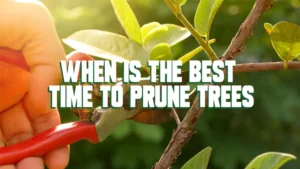


Leave your comment